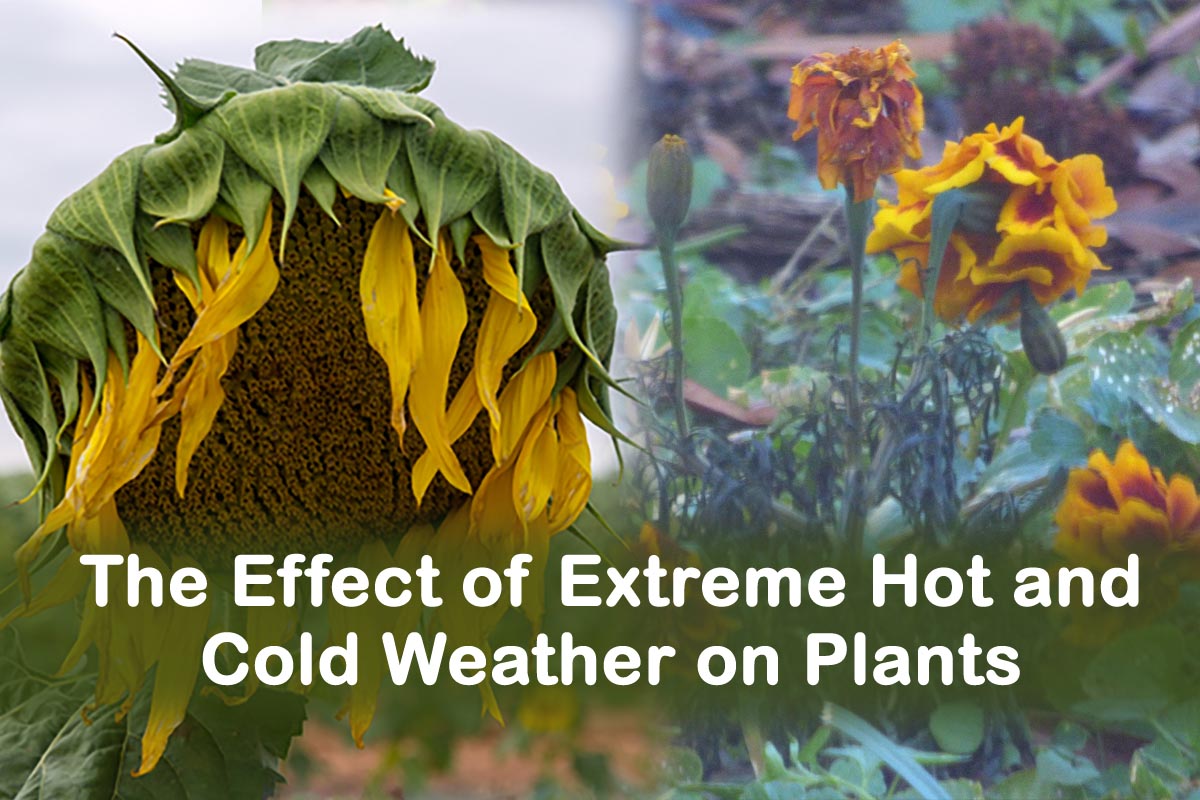
The Effect of Extreme Hot and Cold Weather on Plants
Temperature variations in a plant’s natural environment have an impact on both its growth and function. The maintenance of a largely constant environment is crucial for both animal and plant metabolism. In the case of plants there are other aspects that are at play because they are immobile and unable to migrate to acquire more warmth or sunlight when needed.
So wherever the seed lands and begins to grow, it is possible that it will face competition from other nearby plants for resources like sunlight, water, and nutrients from the soil. This competition may impede the growth of the plant, which is why it is also necessary for it to maintain an internal environment in order to survive. This article primarily highlights the effect of extreme hot and cold weather conditions on plants
Also Read This : Amazing Tips to Maintain our Favorite Cactus at Home
Does Temperature Affect Seed Growth?
Temperature is one element that affects how a plant develops throughout its life cycle, from germination to flowering and seed dispersal, Because pollen generation is extremely temperature sensitive, in hot climates like Australia, an excessively high temperature during flower formation results in a poor wheat yield.
Most plants have a growth season and life cycle that follow the seasonal temperature variations of their environment.
Also Read This : Follow these tips to grow plants from Leaves
What are the effects of extreme cold weather on the plants
Since frozen water (ice and snow) is not usable by plants, low water availability may also be related to extremely cold temperatures. The water inside plants freezes under extremely cold temperatures, bursting the cells and causing the plants to brown, wilt, and eventually die. Different plants are more tolerant of the cold than others.
What are the effect of extreme Hot weather on the plants
Temperature above 40 degree Celcius may cause damage to proteins and those above 75 degree Celcius to chlorophyll pigment within the plant. Which would cause the leaves of the plant to become pale and fall off, ultimately causing the plant to die.
Also Read This : How to Protect Plants From Pests Using Neem Oil?
Desert plants are an exception because they can resist temperatures that are significantly higher than those of alpine plants. For instance, some cacti species may thrive in temperatures as high as 40 degrees Celsius.
How do plants respond to hot and cold weather?
Plants typically have higher physiological and structural adaptations since they cannot migrate into the shade. Some of these adaptations, which assist a plant stay cool in hot temperatures and vice versa, include:
Also Read This : Reason why some plants feed on insects, and their name!
Plants responding to hot temperature :
A plant can stay cool in hot weather by having leaves with reflective surfaces that minimise the quantity of radiation received; these leaves may be light or silvery in colour or have waxy or shiny surfaces.
Evaporative cooling:
it is the process of cooling a plant by allowing water to evaporate through transpiration (stomata opening). This lowers the interior temperature, but if water is not easily accessible, the plant could die.
Also Read This : Horticulture vs Agriculture: What is the difference?
A plant needs to strike a delicate balance between the hazards of excessive water loss during cooling vs heat build-up during water conservation. Hot areas are frequently dry, which compromises evaporative cooling.
Wilting:
the exposed surface area of some plants’ flowers and leaves to the sun is reduced over the day. This will pass if water is easily accessible. The plant may perish if water is not available. For example, roses.
Also Read This : Amazing benefits of having COLOURED PLANTS around you
Leaf orientation:
To reduce the surface area exposed to the sun during the hottest time of the day, plants rotate their leaves. Eucalyptus trees typically grow high to avoid the intense sun.
Leaf fall in summer:
In order to decrease the surface area exposed to absorb heat, eucalyptus trees, which are evergreens, shed some of their leaves during the dry season in hot climates. Additionally, it lessens the chance of excessive water loss through transpiration.
Also Read This : How to Grow Sunflower from Seeds At Home
Plants responding to cold temperature
Leaf fall in autumn(deciduous trees) – Autumn and the chilly winter months, when resources (such as the sun and water) are scarcer, are when many trees lose their leaves. It allows them to survive not only the extreme low temperatures, but also the water shortages and lower availability of sunlight. For example, the beech tree found in Tasmania.
Organic anti-freeze :
Normally, the water between cells freezes first in cold weather, putting plants at the greatest danger of harm.
Also Read This : Superb Ideas to Support Vine Plants for Indoors & Outdoors
Some plants that live in extreme cold conditions, produce anti-freeze substance that reduces the temperature at which the cytoplasm or cell sap freezes.
Frost during periods of new growth may damage plants, but many plants have leaves that are frost-tolerant. For example , after frost the leaves of camellias appear semi-transparent, but on thawing return to normal.
Plants alter their growth rate, active plant growth can occur within the range 5 degree celsius to 45 degree celsius or in tropical areas, growth may cease below 15 degree celsius.
Also Read This : How to Grow Bell Pepper (Capsicum) from Seeds At Home
Vernalisation :
some plants flower in response to low temperatures for example, tulip bulbs must be exposed to between 6 weeks and 3 months of intense cold before they will flower.
Also Read This : Amazing products that can be procured from the COCONUT TREE in ABSOLUTELY NO TIME…




